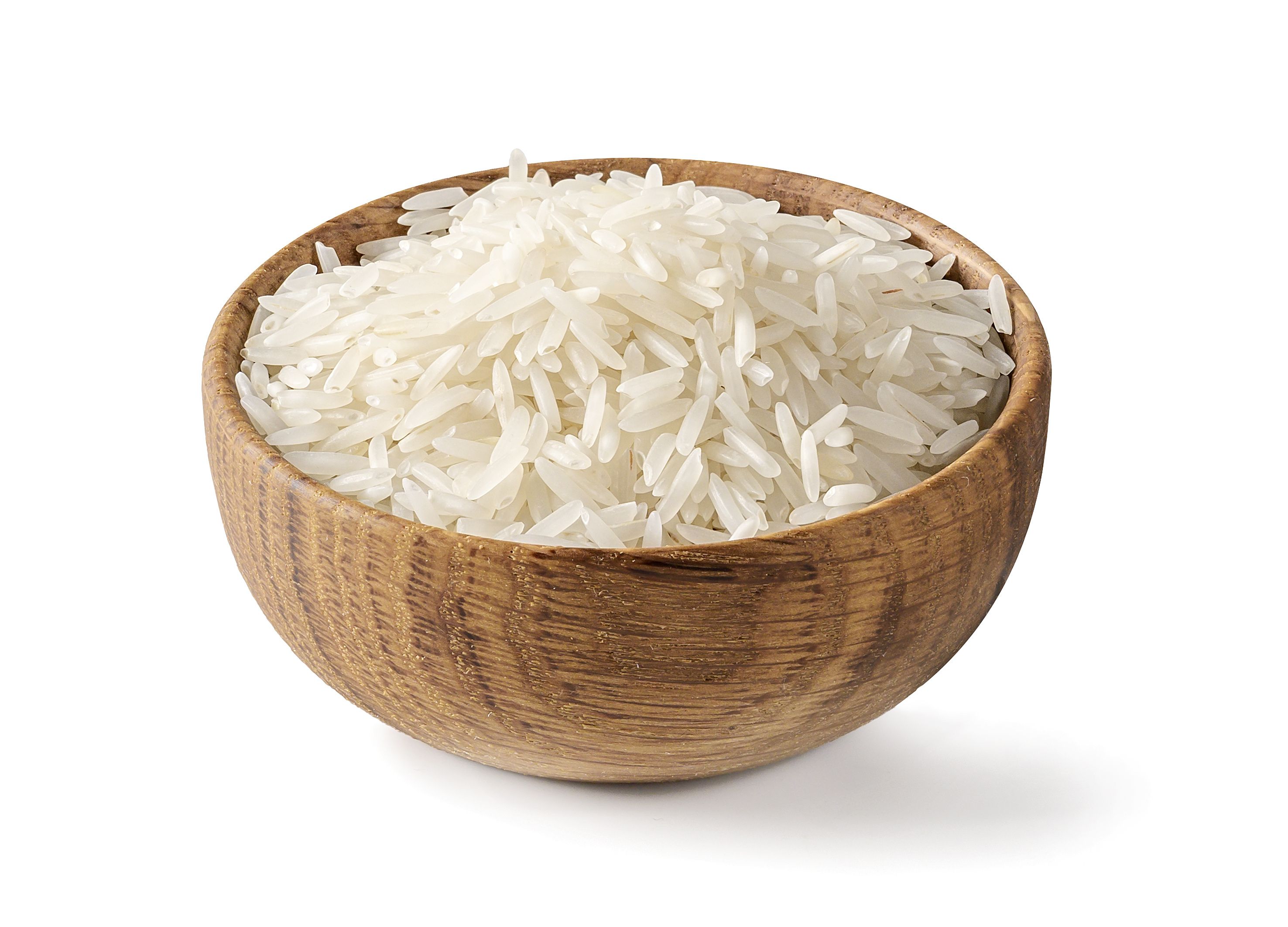Rice Quality Evaluated Using Raman Spectroscopy and Multivariate Analysis
A group of scientists led by Sohei Yamada of Hirosaki University Graduate School of Science and Technology in Aomori, Japan is evaluating the eating quality of white rice samples using Raman spectroscopy. Their findings were published in the Journal of Raman Spectroscopy (1).
Dry white long rice basmati in wooden bowl isolated on a white background. | Image Credit: © Soho A studio - stock.adobe.com

According to the Penn State Department of Food Science, the quality of food is determined by its chemical, physical, and microbiological characteristics (2). Altogether, these factors can determine a food’s safety, acceptability, and economic value (2). Good-quality rice is often believed to make someone feel full more quickly than poor-quality rice, so being able to determine the quality and safety levels rice samples can be beneficial to the average consumer (3).
For this experiment, a 532 nm excitation beam was used in conjunction with multivariate calibration. This allowed for correlations to be established between spectra features and the results of normal sensory tests, with the scientists hoping to establish calibration models following the experiment. Each model’s accuracy was confirmed based on their associated coefficients of determination (R2), root-mean-square errors of calibration, and the root-mean-square errors of prediction values.
The eating quality of the rice samples was measured using models based on partial least squares regression, which provided reasonable predictions (R2 > 0.8). Additionally, the components affecting total evaluation were studied using the variable importance in projection technique. The results showed that starch, amylose, amino acids, glucans, carbohydrates, and proteins were all factors that helped determine the quality of white rice.
References
(1) Yamada, S.; Saito, K.; Maeda, H.; Kanda, S.; Uemara, T.; Ogawa, T.; Wada, S.; Hanada, Y. Evaluation of Eating Quality of White Rice Using Raman Spectroscopy with Multivariate Analysis. J. Raman Spectrosc. 2023. DOI: 10.1002/jrs.6634
(2) Food Quality. The Pennsylvania State University 2024. https://foodscience.psu.edu/research/themes/food-quality (accessed 2024-3-5)
(3) Custodio, M. C.; Cuevas, R. P.; Ynion, J.; Laborte, A. G.; Velasco, M. L.; Demont, M. Rice Quality: How Is It Defined by Consumers, Industry, Food Scientists, and Geneticists? Trends Food Sci. Technol. 2019, 92, 122–137. DOI: 10.1016/j.tifs.2019.07.039
NIR Spectroscopy Explored as Sustainable Approach to Detecting Bovine Mastitis
April 23rd 2025A new study published in Applied Food Research demonstrates that near-infrared spectroscopy (NIRS) can effectively detect subclinical bovine mastitis in milk, offering a fast, non-invasive method to guide targeted antibiotic treatment and support sustainable dairy practices.
Nanometer-Scale Studies Using Tip Enhanced Raman Spectroscopy
February 8th 2013Volker Deckert, the winner of the 2013 Charles Mann Award, is advancing the use of tip enhanced Raman spectroscopy (TERS) to push the lateral resolution of vibrational spectroscopy well below the Abbe limit, to achieve single-molecule sensitivity. Because the tip can be moved with sub-nanometer precision, structural information with unmatched spatial resolution can be achieved without the need of specific labels.
New AI Strategy for Mycotoxin Detection in Cereal Grains
April 21st 2025Researchers from Jiangsu University and Zhejiang University of Water Resources and Electric Power have developed a transfer learning approach that significantly enhances the accuracy and adaptability of NIR spectroscopy models for detecting mycotoxins in cereals.
AI-Powered SERS Spectroscopy Breakthrough Boosts Safety of Medicinal Food Products
April 16th 2025A new deep learning-enhanced spectroscopic platform—SERSome—developed by researchers in China and Finland, identifies medicinal and edible homologs (MEHs) with 98% accuracy. This innovation could revolutionize safety and quality control in the growing MEH market.